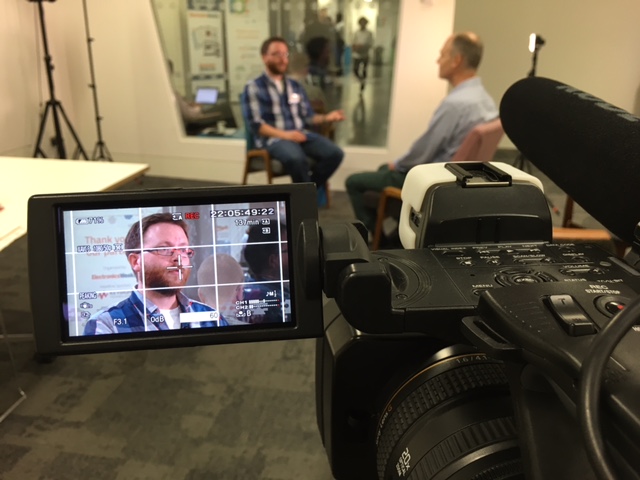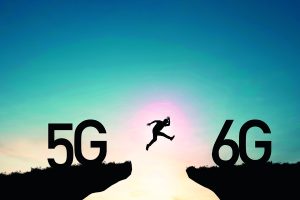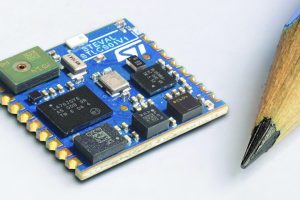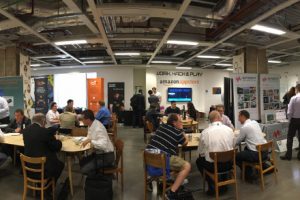‘Making IoT work for us’ was the title, and a notable theme that emerged across the conference was the promising development of the Internet of Things (IoT) in smart buildings.
See also: IoT Design 2016: Smart buildings, privacy and trust
IBM and Hursley House
It started with IBM’s emerging technology specialist Nick O’Leary (pictured below) talking about ’21st Century Innovation in an 18th Century House’. Specifically, this was the Grade II listed building Hursley House, part of IBM’s research complex near Winchester, which also includes the company’s showcase IoT Lab.
(The house has a fascinating history, incidentally, such as becoming the Design Centre for Vickers during WWII and being the place where the Spitfire aircraft was designed.)
Anyway, O’Leary outlined how, in stages, IBM was planning to walk the IoT talk in terms of bringing the building’s (automated ) management into the 21st century. Having bought Hursley House in 1956, IBM decided to make it a “living lab” of development.
Wireless comms, such as Sigfox, were an important part of the mix, but he expanded on how you need to process additional, contextual data over and above any sensor data. For example, when studying the temperature of conference rooms, it made sense to incorporate weather forecast data, too.
And temperature control strategies should also dovetail with meeting room bookings, he said. You don’t want to heat an empty room unnecessarily.
IBM and BIM
He highlighted the potential of BIM (building information modelling), which seeks to track every physical and functional characteristic of a building in a digital way, and ALIM (asset lifecycle information management) to support IoT developments.
Note that there will be different levels of BIM compliance, which will eventually become part of all public, centrally procured projects. The implications are widespread, noted O’Leary, when you consider such things as monitoring the health of construction workers, through helmet-gathered data (noise, pollution, etc). He also raised the possible role of augmented reality in maintenance, with the BIM model providing the data.
At a minimum, the system helps to specify, in a structured way, the assets of a building such as lighting and windows key elements for any automated lighting system, for example.
What digital processes do you need, O’Leary asked, to support the entire life cycle of a building?
The UK government has backed the use of BIM:
“This Government’s four-year strategy for BIM implementation will change the dynamics and behaviours of the construction supply chain, unlocking new, more efficient ways of working, ” said then minister for the Cabinet Office, Francis Maude, when launching the initiative. “This whole sector adoption of BIM will put us in the vanguard of a new digital construction era and position the UK to become world leaders in BIM.”
PhotonStar
 Interesting stuff. And then the theme was continued by PhotonStar’s head of business development, Fenella Frost (right), whose talk was titled ‘Reducing operational costs in businesses – solving real problems with IoT’.
Interesting stuff. And then the theme was continued by PhotonStar’s head of business development, Fenella Frost (right), whose talk was titled ‘Reducing operational costs in businesses – solving real problems with IoT’.
These real problems often involved managing a building in a smart manner, in ways going beyond conventional lighting systems. These were described as “IoT solutions for buildings”.
One example covered was a dementia ward at St Mary’s Hospital in Paddington. The matron of the ward wanted a circadian lighting system retrofitted – changing the constituency of light as the day progresses to match natural processes.
In more technical terms, supplying melanopic lumens during the day and photopic lumens at night, achieved via PhotonStar’s CircadianMAX ColourMax system. This is described as a: “biologically optimised LED light source, tuneable from warm night (1,880K) for best night time effectiveness, a genuine match for traditional light sources (2,200K-4,000K), and a high lumen output biologically enriched day whites for maximum daytime effectiveness (7,000K)”.
An underlying point raised was that such smart systems often mean taking away direct control from end-users, in this case patients with dementia. The idea is that the lighting has been optimised, and should not be changed.
Other examples quoted included residential buildings where the people responsible for supplying the heat and lighting (i.e. landlords) – the people who will most benefit from smarter control and cost saving on management – do not necessarily want the residents to have full control.
Basically, in this case smart buildings are taking control away from individuals’ smartphones and the like. You may not want, for example, a student in a residential block to have full control of heating levels. Interesting, as it goes against the grain of popular expectations for the IoT.
Internet freezer
Another example of smart building management concerned supermarkets, and the control and regulation of freezers.
Figures were quoted that a failure to maintain a freezer unit in a supermarket can cost as much as £15,000, resulting from restocking procedures involving closing access to the unit and the waste of food itself. In other words there is money to be saved in a system that can alert managers , as appropriate, to freezer doors that aren’t closed or temperatures that fall below regulatory levels.
Rather than the much-mocked Internet fridge, that re-orders your milk, this was the true IoT example, said Frost: the Internet freezer system that maintains a safe, cost-effective environment.
You only need to think of supermarkets turning to such solutions to see the scale of the opportunity.
Electric Imp
 The theme was later continued further in an interview with guest speaker Hugo Fiennes, CEO of Electric IMP (right).
The theme was later continued further in an interview with guest speaker Hugo Fiennes, CEO of Electric IMP (right).
From all the possible sectors where IoT may be expected flourish, I asked him, where was he seeing most traction with his own Electric Imp connectivity platform?
“Smart buildings”, was his immediate reply. “It’s really moving a lot faster than any of the others right now,” he said. “It skirts some problems.”
“Health is interesting, for example, but it’s very laden with regulation. A lot of the things in smart buildings – building management systems, lighting, ATRAC – these are all individually unconnected systems right now. But it doesn’t take much connectivity to make a significant difference in cost. The payback period is short, and there are really good applications there.”
“We see a lot of stuff in smart buildings. I would say that sector is the fastest moving right now.”
Smart Home fail
Finally, a number of talks also highlighted the dangers prevalent in poorly implemented smart home gadgets, particularly from a security angle. Devices that were inherently vulnerable could be brought into your home, and any benefits gained from smartphone control could easily be compromised and rendered worse than useless.
The contrast was obvious – engineered smart buildings under regulatory control versus proprietary consumer gadgets failing to properly secure themselves.
It would be a rather crude summary to say ‘smart building good, smart home bad’ but the contrasts, and the differences in approach, were clearly highlighted across the conference.
IoT Design 2016
See also: IoT Design 2016: Privacy and trust
Finally, thanks must be paid to the sponsors whose support enabled the event to be held. Particularly Keysight Technologies, the event’s headline sponsor, and also the main sponsors Green Hills Software, Linear Technology and MicroPnP.
Read more about the IoT Design 2016 event »
 Electronics Weekly Electronics Design & Components Tech News
Electronics Weekly Electronics Design & Components Tech News






Hasn’t M&S had fridge and freezer alarms for, well, decades now?
I wouldn’t be surprised, SEPAM. There’s nothing new under the sun, but I suppose its the connectivity and degrees of control that change and evolve. I wouldn’t get too hung up on the IoT label.
This is a very interesting article. As I sat during the day in my 9×9 cubicle, fluorescent lights shining down, I wondered… someone should be automating things around here. There has to be a way to take what I had in my smart house, and bring it to work. The only thing lacking was security as you mentioned in the above article.
I would imagine the companies playing in the B2B smart home industry are much more regulated and have higher standards of security since these companies are likely paying a ton of money compared to the average homeowner looking to get into home automation.
It would be great to see the vision these companies have for business automation (aka smart building) moving forward.
Thanks again,
Eric
Thanks Eric. Yes, it sounds like there is a lot of room for relatively-easy-to-achieve improvements in this area. Scale favours big building automation, rather than individual homes, and then there’s the security issues. But there is also an issue around control: one person’s optimum setting may be abother’s sub-optimal…and without control there’s limited freedom…